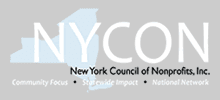The national survey showed that 36 percent of charities reported an increase in donations in the first nine months of 2010, compared with only 23 percent in the same period of 2009.
Thirty-seven percent of charities reported a decrease in giving, a dramatic change from 2009's 51 percent. Among those experiencing a decline in giving, the main reason cited was fewer individual donations and smaller amounts. Lower amounts received from foundations and corporations also contributed to the overall lower giving amounts at these charities. Giving remained unchanged at 26 percent of nonprofits in 2010 vs. 25 percent in 2009.
"We are beginning to see some positive signs, but despite that giving still has a long way to go to return to the levels it was at three or four years ago," said Patrick M. Rooney, executive director of the Center on Philanthropy at Indiana University, which spearheaded the collaboration. "One-fifth of charities in the survey said their budgets for 2011 will be lower than for 2010, forcing many of them to look at cuts in services, salaries and staff."
Among the 20 percent of nonprofits anticipating reduced budgets next year, 66 percent say they will have to reduce programs, services or operating hours, 59 percent expect to cut or freeze staff salaries or benefits, and 49 percent are planning layoffs or hiring freezes.
"The Nonprofit Fundraising Survey: November 2010" is the first product of a collaboration involving six organizations that serve the nonprofit sector: the Association of Fundraising Professionals, Blackbaud, the Center on Philanthropy at Indiana University, the Foundation Center, GuideStar USA Inc., and the Urban Institute's National Center for Charitable Statistics.
"For the first time in two years, there is cause for cautious optimism about the nonprofit sector in this economy," said Bob Ottenhoff, president and CEO of GuideStar. "Nonetheless, in this latest study, as in all prior years, nonprofits also are reporting increased demand for their services. Even as giving increases, philanthropic dollars fall short of the amounts needed to help people in our country and abroad."
Demand for services increased at 78 percent of human service nonprofits and 68 percent of charities overall in 2010. Charities will be hard-pressed in 2011 to secure funding for growing needs, especially as individual and foundation donors are cautious about boosting support and other sources of funding — including government contracts for services — are cut.
"Younger, less well-established nonprofits have been especially hard hit by the recession," noted Lawrence T. McGill, vice president for research at the Foundation Center. "Many foundations, seeking to maximize more limited resources, have steered their grantmaking toward organizations they believe have the best chance to weather the economic storm."
Other Key NRC Survey Findings:
- In four of eight subsectors, the share of organizations reporting an increase in contributions was about the same as the share reporting a decrease. The four with nearly equal percentages of organizations with giving up and giving down are: arts, education, environment/animals, and human services.
- International organizations were the most likely to report an increase in contributions, reflecting donations made for disaster relief.
- In three subsectors — health, public-society benefit, and religion — a larger share of the organizations reported declines than reported increases.
- The larger an organization's annual expenditures, the more likely it reported an increase in charitable receipts in the first nine months of 2010 compared with the same period in 2009.
- Most organizations were guardedly optimistic about 2011. Forty-seven percent plan budget increases, 33 percent expect to maintain their current level of expenditures, and 20 percent anticipate a lower budget for 2011.
By working together, the Nonprofit Research Collaborative can reduce the number of surveys nonprofits are asked to complete, collect information more efficiently, and analyze it in more useful ways to create the benchmarks and trends that nonprofits and grant makers use to guide their work. Each partner has at least a decade of direct experience collecting information from nonprofits on charitable receipts, fundraising practices, and/or grantmaking activities. Survey participants will form a panel over time, allowing for trend comparisons among the same organizations. This approach provides more useful benchmarking information than repeated cross-sectional studies.
The first NRC survey, based on questions that GuideStar used for its annual economic surveys, was fielded between October 19 and November 3, 2010. It received 2,513 responses. More than 2,350 charities completed the questions, as did 163 foundations. The analysis for grant makers includes responses from charities that make grants but that are not foundations. These include United Ways, Jewish federations, congregations, and a number of other types of organizations. There were responses from 386 grant makers.
The respondents form a convenience sample. There is no margin of error or measure of statistical significance using this sampling technique, as it is not a random sample of the population studied. However, given the long-running nature of GuideStar's economic surveys and the strong relationship between findings in those studies in prior years and actual results once tax data about charitable giving are available, the method employed here is a useful barometer of what charities experience and what total giving will look like. In the future, the NRC surveys are expected to occur in early winter, spring, and fall every year.
"The Nonprofit Fundraising Survey: November 2010" (PDF), which includes responses broken down by types of nonprofits and budget size, can be downloaded at no charge from the Gain Knowledge area of the Foundation Center's web site.













No comments:
Post a Comment